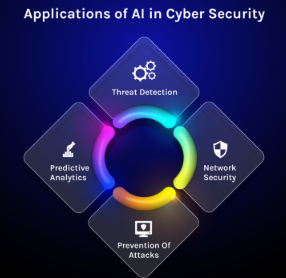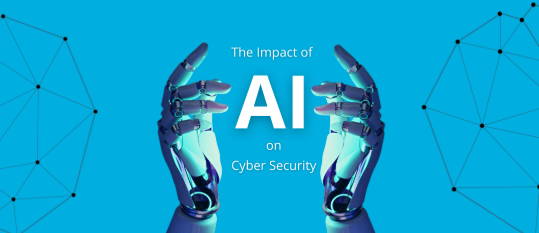Artificial Intelligence is transforming the way organizations protect their digital assets. With the growing complexity and volume of cyber threats, AI plays a vital role in making cybersecurity systems more proactive, efficient, and scalable. Below are some of the most important applications of AI in cybersecurity.
Threat Detection and Prevention
AI is widely used to detect suspicious patterns, malware behavior, and anomalies in real-time. Machine learning models are trained on vast datasets to recognize known threats and predict potential zero-day attacks before they cause damage.
Intrusion Detection Systems (IDS)
AI-enhanced IDS monitor network traffic to detect unauthorized access or suspicious activity. Unlike traditional IDS, AI systems can identify new threats based on behavior rather than relying solely on predefined signatures.
Endpoint Protection
AI secures endpoints such as laptops, smartphones, and IoT devices by analyzing behavior, detecting irregularities, and blocking threats before they spread across the network. This provides real-time defense even when devices are outside of the corporate firewall.
Email Security and Phishing Detection
AI scans incoming emails for signs of phishing, spam, or malicious attachments by evaluating language patterns, URLs, and user behavior. This helps prevent data breaches caused by human error.
User and Entity Behavior Analytics (UEBA)
AI-powered UEBA tools analyze how users typically behave—logins, file access, system usage—and alert security teams when activity deviates from the norm, potentially indicating compromised accounts or insider threats.
Automated Incident Response
AI reduces response time by taking automated action when threats are detected. It can isolate affected systems, notify the security team, and recommend or implement solutions, ensuring a faster and more coordinated response.
Vulnerability Management
AI helps scan software and systems for vulnerabilities, prioritize threats based on risk, and even suggest patches or mitigation steps. This improves overall security posture and reduces the attack surface.
Identity and Access Management (IAM)
AI is used to detect unauthorized access attempts and enforce adaptive authentication mechanisms based on context, such as device, location, and user behavior.
Conclusion
AI brings speed, intelligence, and automation to cybersecurity, making it a powerful ally in defending against ever-evolving threats. From threat detection to automated responses, its applications are critical for modern security strategies.







Leave feedback about this